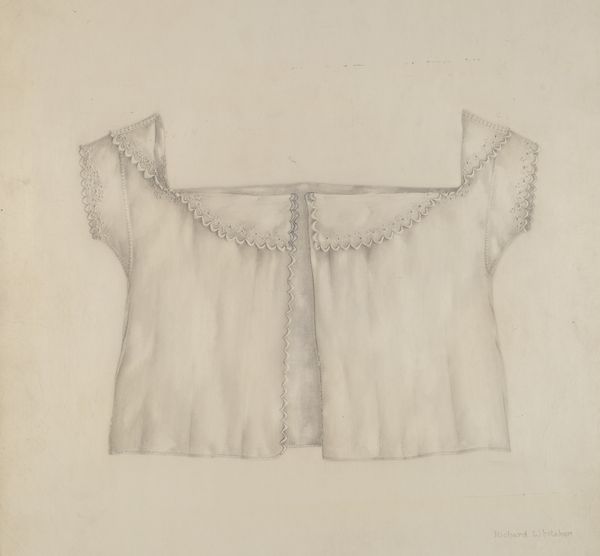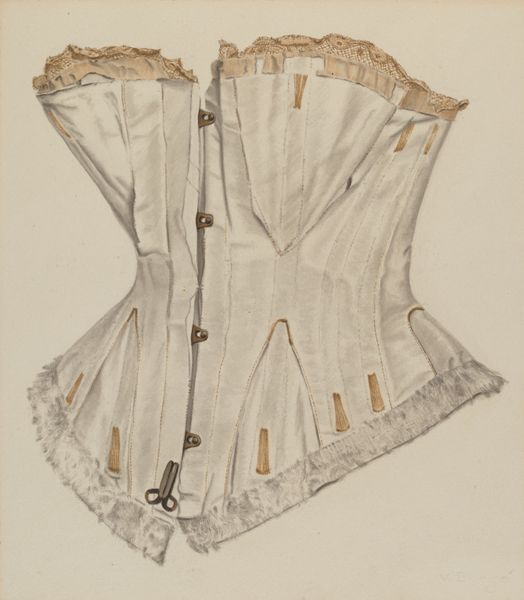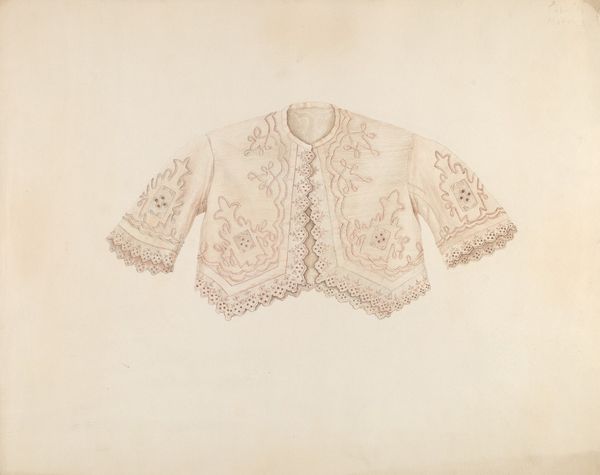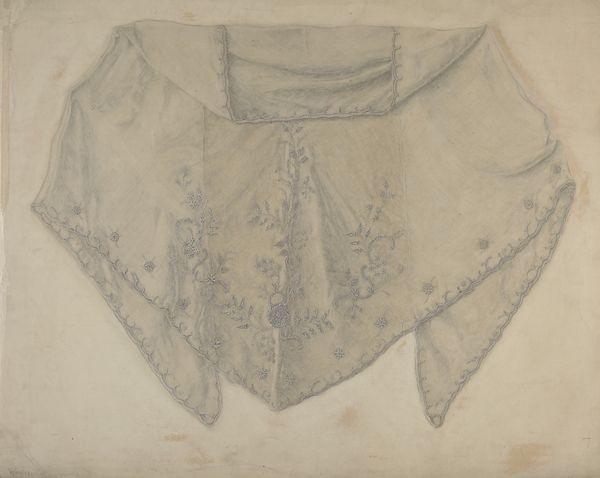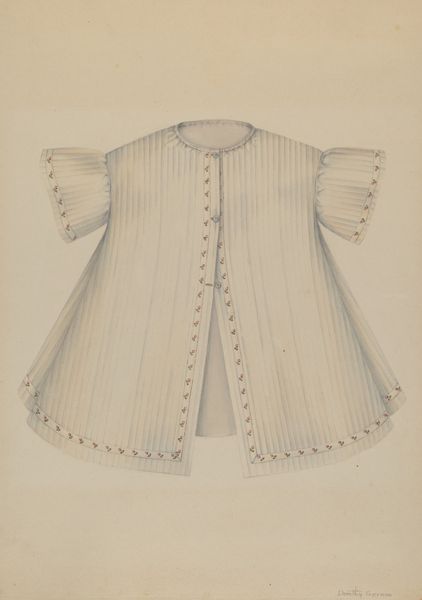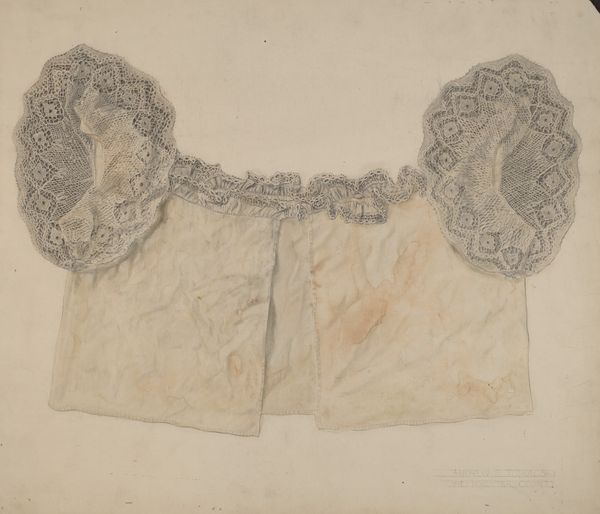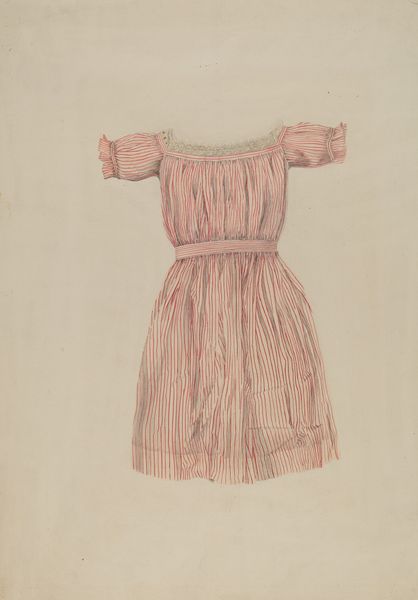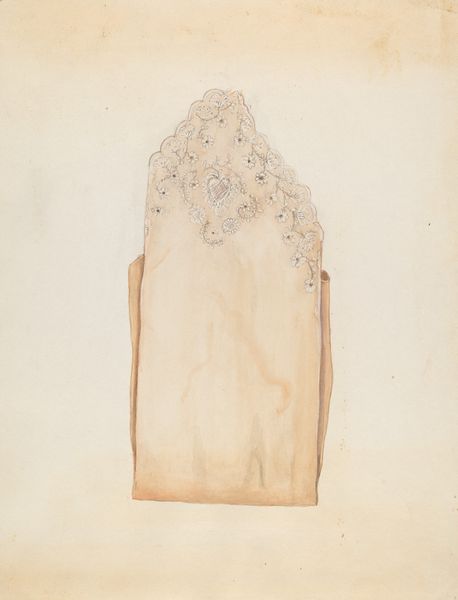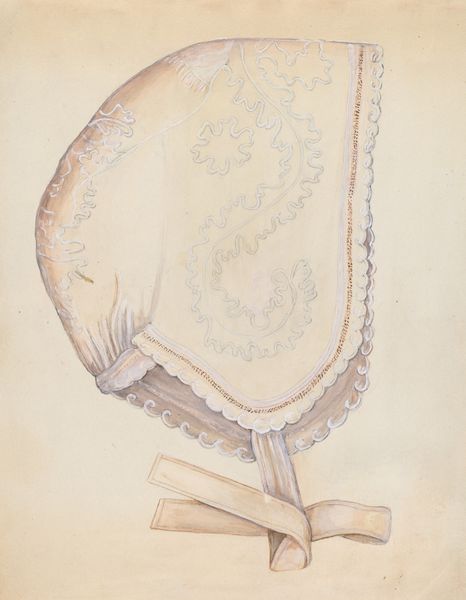
drawing, paper, watercolor
#
drawing
#
paper
#
watercolor
#
realism
Dimensions: overall: 45.7 x 57.8 cm (18 x 22 3/4 in.) Original IAD Object: 17" at waist; 25" long
Copyright: National Gallery of Art: CC0 1.0
Editor: Here we have John Thorsen's "Corset," a watercolor and drawing on paper, created around 1941. It looks so delicate. The detail on the seams and buttons is really striking, like a technical drawing but… softer. What strikes you about this piece? Curator: Immediately, the question is, what kind of labor went into this object, both the depicted corset and Thorsen's rendering of it? What kind of consumption did the corset enable or suggest? The paper, the watercolor medium - these all speak to a kind of ephemerality. Was this corset documentation of a dying process and the consumption that depended upon it? Editor: I hadn’t considered the labor aspect so directly, especially how that ties into the medium. So, the watercolor sort of speaks to its fleeting existence as a process. The detail is intense – all the buttons and stitching. Why watercolor instead of, say, oil, for something meant to constrain the body? Curator: Exactly! Watercolor wasn’t the expected medium, which prompts us to question assumptions of labor and value. The history of dressmaking, and its later industrialization, tells us that those buttons and seams represent countless hours of skilled, often invisible, labor, largely from women. The "Realism" style might draw the viewer to interpret it as documentary or a purely objective record. But even hyperrealism presents constructed interpretation. How else could you connect realism and materialism in Thorsen’s drawing? Editor: Perhaps by thinking about the paper itself as a manufactured material, pointing back to the broader context of production? I’m starting to see it as a commentary on the commodification of both the female form and the labor involved in achieving that specific aesthetic. Curator: Precisely! And that understanding reveals a much more complex narrative. Considering the means of production alongside the subject, makes us consider deeper social structures. Editor: This has shifted my view significantly! I initially saw delicacy, but now it's about production, labor, and social context, like a little drawing holds a wealth of societal critique. Curator: Absolutely. And that shift is the power of considering materiality and production.
Comments
No comments
Be the first to comment and join the conversation on the ultimate creative platform.
